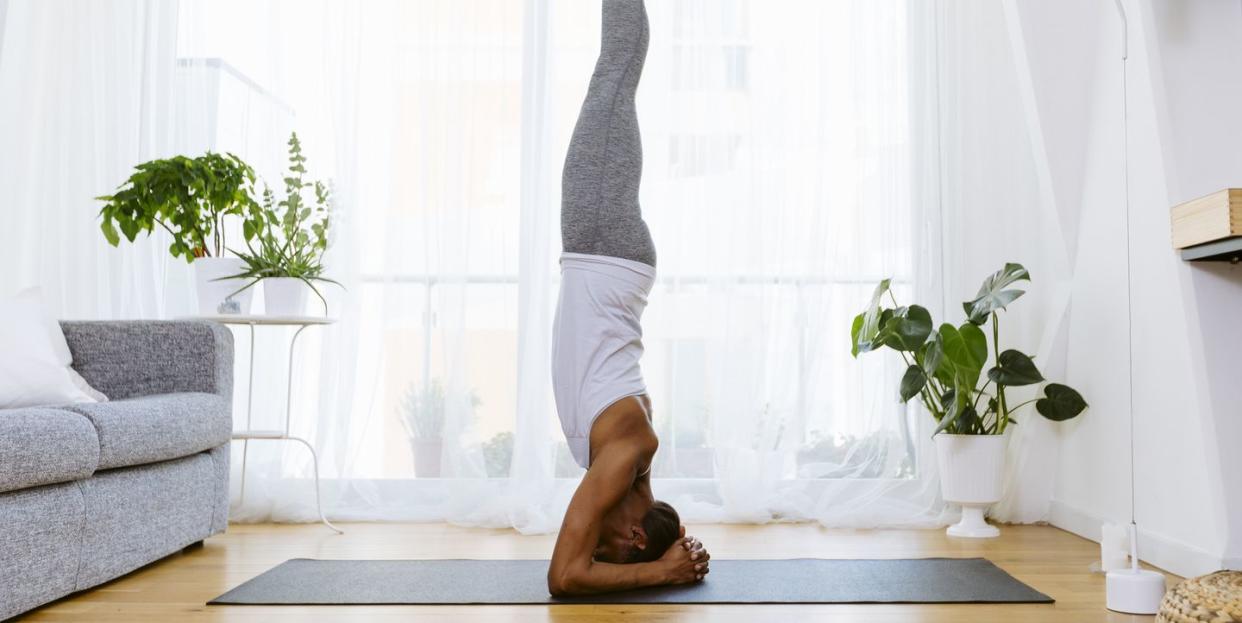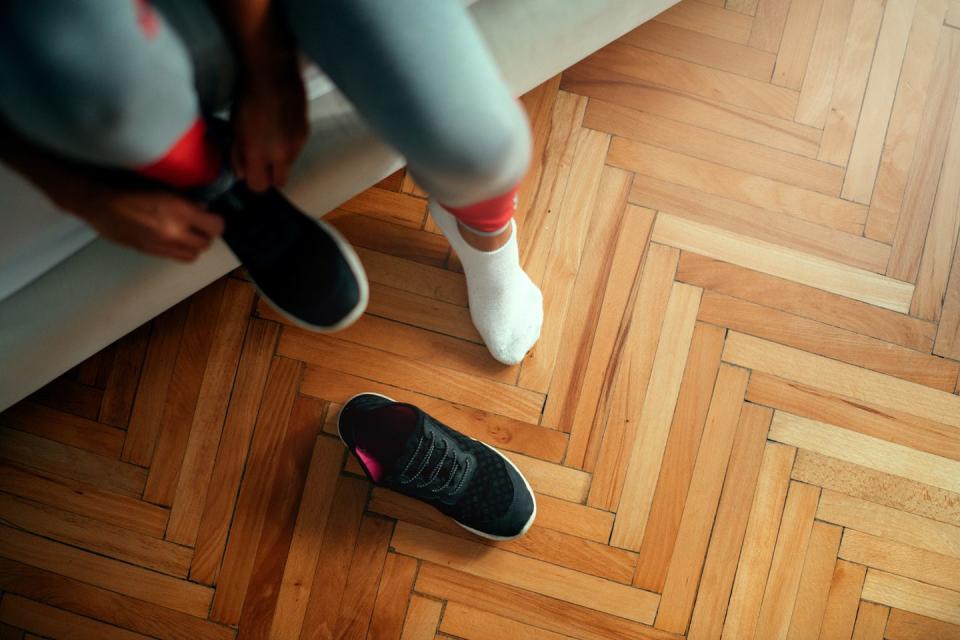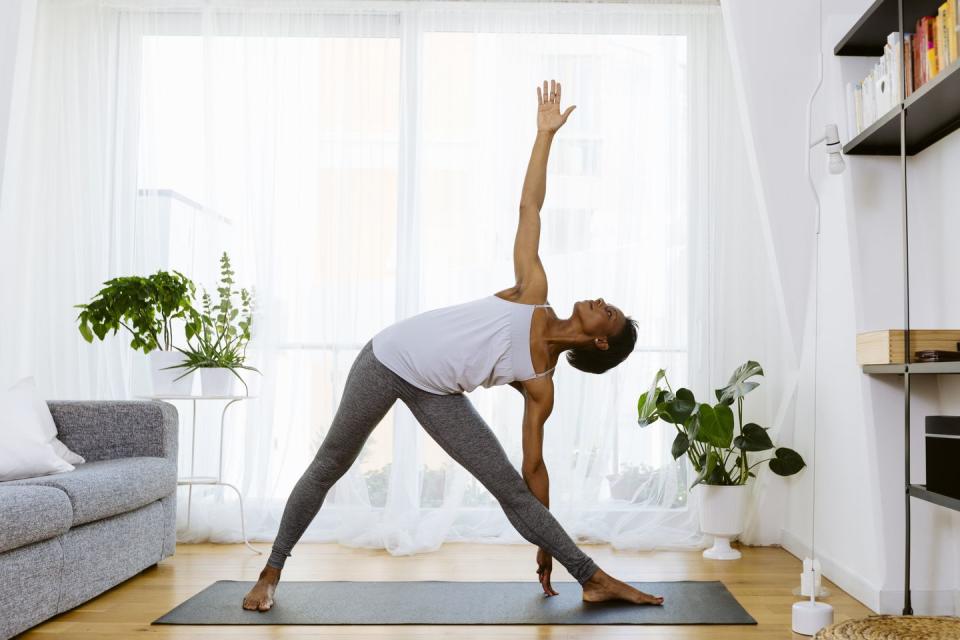How to exercise mindfully at home, while away from the gym

Following government advice for gyms to temporarily close nationwide across the UK, and with the general public encouraged to stay home and avoid public places such as parks and public gardens, it can be difficult to maintain an active physical routine and regularly exercise during this time of disruption.
Whilst exercise is good for your physical health, it also does wonders for your mind health. As we safeguard our physical wellbeing during the coronavirus (COVID-19) crisis, it’s also important to take care of and prioritise our mental wellbeing.
Our mental health can really struggle in this time, when we’re stuck indoors, changing our routines, and feeling new and overwhelming levels of fear and anxiety. As part of protecting our mental health, it’s important to ensure we continue to exercise as best we can in this new situation and circumstance.
Here's how to exercise mindfully at home, while away from the gym, during this current climate of social distancing and self-isolation.
1. Go for a mindful walk in your home
The best and most simple form of exercise you can do whilst being cooped up indoors is to go for a mindful walk. Even in the confines of your home, exploring room by room, this can be an effective mode of physical and mental exercise.
A walking meditation is designed to bring body and mind together. Meditating while walking is a way to get the mind to walk with us and bring a relaxed focus to this everyday pursuit.
Though it is called a walking meditation, that doesn’t mean we’re walking around on autopilot with our eyes closed. Instead, we are mindfully walking using a meditative technique, with eyes wide open, at a pace that suits us, with our attention on our immediate setting around us.
Essentially, walking becomes a tool to familiarise ourselves with the present moment, and we do this by redirecting the mind. Instead of our object of focus being the breath, as you would do with a sitting meditation, our focus becomes the rhythm of our gait.
Try Headspace’s 'Walking at Home' session in the new Weathering the storm collection (free for all users globally during this public health crisis), which can guide you through a mindful walk.
Walking at home can be tried as a slow-motion walk, in a straight line, going forward for 10-20 paces and then turning around to walk back to your starting point. This meditation-in-motion can easily be done from your home, either in your living room, hallway, or any room with enough comfortable space.

While walking around in your home, simply follow these cues for about 30-60 seconds:
• Body check: As you start to walk, notice how the body feels. Heavy or light, stiff or relaxed? Take a few seconds to become aware of your posture and the way you’re carrying yourself.
• Observe: Without trying to change the way you’re walking, simply observe your gait and bring your attention to it. This can sometimes make you feel self-conscious – and that’s OK, but that feeling usually passes.
• Tune in: Tune into what’s going on around you in your surroundings – your children doing online classes, your partner cooking a meal, your housemate making a cup of tea. You’re not thinking about any of these things, though; you’re simply acknowledging what you see.
• Noting sounds: Notice the sounds that drift in. What can you hear? Again, try to differentiate any one noise but not dwell on it.
• Familiar smells: Now turn your attention to any smells, whether pleasant or unpleasant. Notice how the mind habitually wants to create a story out of each smell and how it might remind you of somewhere, something, or someone.
• Physical sensations: Next, make a point of noticing any physical sensations, from the temperature in the room and how it feels on your skin, or how it feels as the soles of your feet touch the ground. There’s still no need to think about any of these observations. Simply notice, acknowledge, and let go.
• Movement: After a minute or two, contemplate the sensation of movement in the body: how the arms hang or swing by your side or how the weight steadily shifts from right to left. Observe your stride, your pace, and the rhythm you’re creating with each step.
• Focus on your rhythm: Use that rhythm — the soles of the feet touching the ground — as your base of awareness, a place you can mentally come back to when the mind wanders off. Repeat this throughout your walk, step by step.
2. Mindful running outdoors

Social distancing doesn’t always mean you have to stay indoors. If you are able to, you can still venture outside if you’re not in quarantine, so why not try going for a mindful jog or run in the fresh air.
Under the current social distancing guidelines, you are allowed one form of exercise a day, for example a run, walk, or cycle – alone or with members of your household.
You may be used to trying to distract your mind in order to get through the physicality of a run, but the opposite approach, tuning your mind into the body, may help you get in the zone and have a better running experience, especially in this new, confined space.
The repetitive nature of running can be harnessed as a form of meditation: it’s about bringing the mind back to the present while we run, focusing on our breath, the feeling of our feet hitting the ground, and noticing the sights and sounds around us.

By starting to practice running as a form of meditation, you can learn how to remain relaxed and confident, even while physically pushing yourself. This very well may lead to more enjoyment and fulfilment from the run, rather than simply surviving it, whilst also improving your mental and physical health in this trying time.
3. At-home workouts to relieve stress
Headspace has recently launched Move Mode, a new fitness experience to help members strengthen the mind-body connection, with a mix of 28-day courses as well as quick, simple 25-minute workouts, mindful cardio sessions and rest day meditations.
A range of mindful fitness activities, with low-to-medium impact exercises and cardio, gets your heart pumping and helps your mind to release tension.

Alternatively, the new Weathering the storm collection has two at-home workouts for reframing anxiety and releasing stress, led by two world-class athletes: British Olympic diver, Leon Taylor, and US Olympic volleyball player, Kim Glass.
These full-body mobility and stability workouts can help you to reframe stress and let it go through movement. They can also allow you to find a place of stillness by slowly releasing tension, one muscle at a time.
All you need is a bit of space indoors, maybe something to lean on like a table or box, comfortable clothes and a yoga mat, if preferred. This makes exercise something that can be done in a simple and fun way while you can’t get to the gym, and with a mindful twist to help keep both your mind and body healthy.
Download Headspace on the App Store or Google Play to access the Weathering the Storm meditation collection, or visit www.headspace.com/covid-19 for more information.
• In need of some positivity or not able to make it to the shops? Subscribe to House Beautiful magazine today and get 6 issues for just £6, delivered directly to your door every month.
Like this article? Sign up to our newsletter to get more articles like this delivered straight to your inbox.
You Might Also Like



